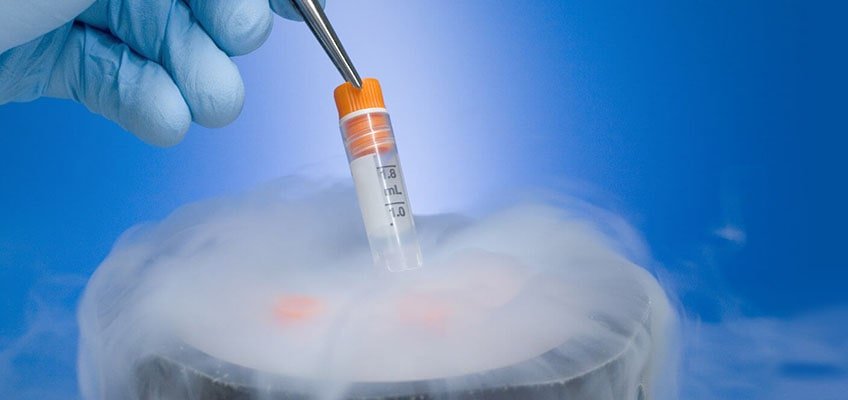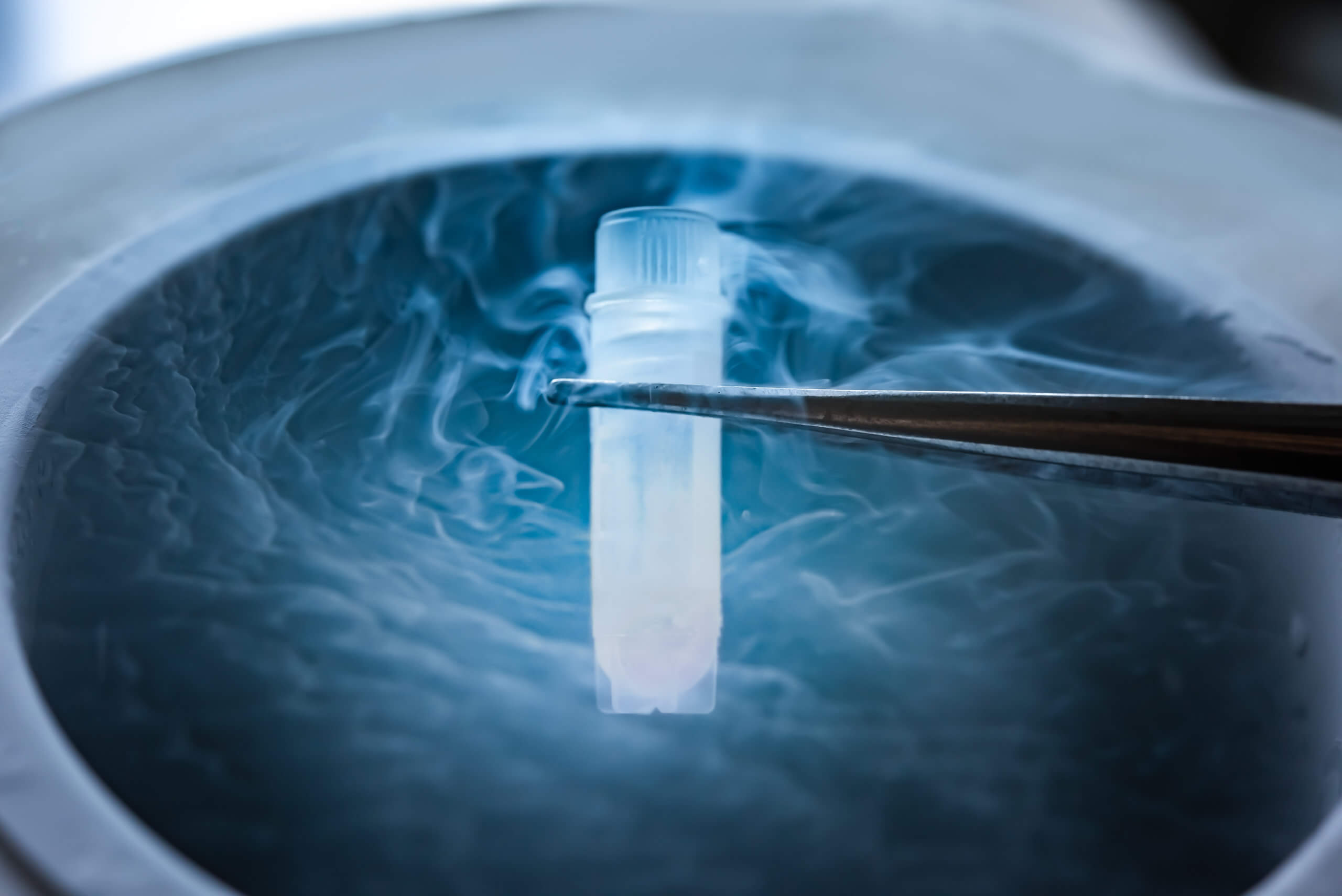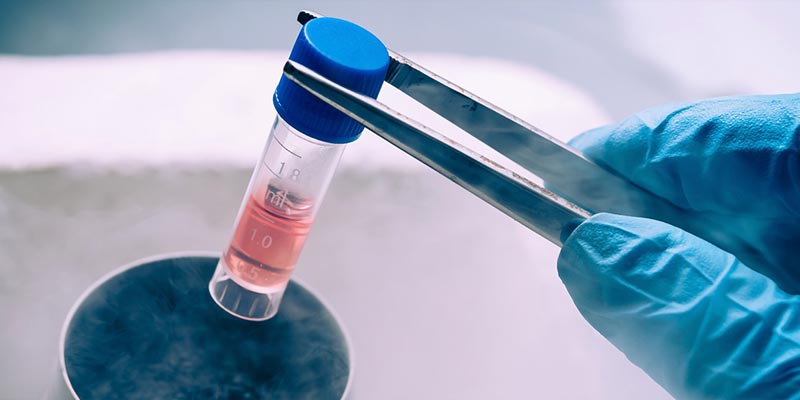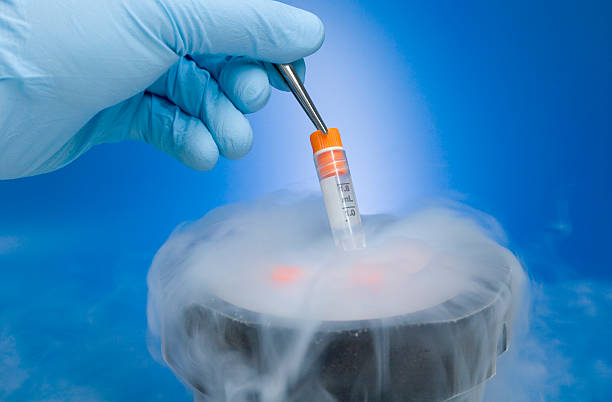Cryopreservation Presentation
| Introduction to Cryopreservation | ||
|---|---|---|
| Cryopreservation is the process of preserving biological material at extremely low temperatures. It allows for long-term storage of cells, tissues, and organs. Cryopreservation is used in various fields, including medicine, agriculture, and research. | ||
| 1 | ||
| Benefits of Cryopreservation | ||
|---|---|---|
| Cryopreservation enables the preservation of valuable genetic resources, such as rare species and endangered plants. It allows for the storage of cells and tissues for future use in medical treatments and research. Cryopreservation reduces the need for continuous maintenance and breeding of living organisms. | ||
| 2 | ||
| Cryopreservation Techniques | ||
|---|---|---|
| Vitrification is a cryopreservation technique that involves converting the biological material into a glass-like state without ice formation. Slow freezing is a commonly used method where the temperature is gradually decreased to minimize damage to the cells. Cryoprotectants, such as glycerol and dimethyl sulfoxide (DMSO), are often added to protect cells from freezing-induced damage. | ||
| 3 | ||
| Applications of Cryopreservation in Medicine | ||
|---|---|---|
| Cryopreserved sperm and eggs are used in assisted reproductive technologies, such as in vitro fertilization (IVF). Cryopreservation of embryos allows for delayed embryo transfer, increasing the chances of a successful pregnancy. Cryopreserved tissues and organs can be used for transplantation, reducing the need for live donors and minimizing wait times. | ||
| 4 | ||
| Cryopreservation in Agriculture | ||
|---|---|---|
| Cryopreservation is used to preserve plant genetic resources, allowing for the conservation of crop diversity and protection against plant diseases. It enables the storage of animal semen and embryos for breeding purposes, facilitating selective breeding and genetic improvement. Cryopreservation can also be used to preserve livestock embryos for export and transportation. | ||
| 5 | ||
| Challenges and Limitations of Cryopreservation | ||
|---|---|---|
| Cryopreservation can cause damage to cells due to ice formation, dehydration, and cryoprotectant toxicity. Not all biological materials can be successfully cryopreserved, and the success rates vary depending on the type of material. Cryopreservation requires specialized equipment and expertise, making it expensive and inaccessible in certain settings. | ||
| 6 | ||
| Future Developments in Cryopreservation | ||
|---|---|---|
| Advances in cryopreservation techniques, such as vitrification, hold promise for improving the success rates and viability of cryopreserved materials. The development of novel cryoprotectants with enhanced properties may further enhance the preservation of biological material. Research is ongoing to explore the potential of cryopreservation in areas such as regenerative medicine and organ banking. | ||
| 7 | ||
| Ethical Considerations | ||
|---|---|---|
| Cryopreservation raises ethical concerns regarding the status and rights of cryopreserved embryos and the concept of "posthumous procreation." Questions about the long-term effects of cryopreservation on the genetic integrity and viability of stored materials also arise. The equitable distribution and access to cryopreservation technologies and resources pose ethical challenges in global healthcare and conservation efforts. | ||
| 8 | ||
| Conclusion | ||
|---|---|---|
| Cryopreservation is a valuable tool for preserving biological material for various applications in medicine, agriculture, and research. Despite challenges and limitations, ongoing advancements in cryopreservation techniques offer great potential for future developments. Ethical considerations surrounding cryopreservation require careful deliberation to ensure responsible and equitable use of this technology. | ||
| 9 | ||
| References (download PPTX file for details) | ||
|---|---|---|
| List the references used in the presentation ... Your second bullet... Your third bullet... |  | |
| 10 | ||








